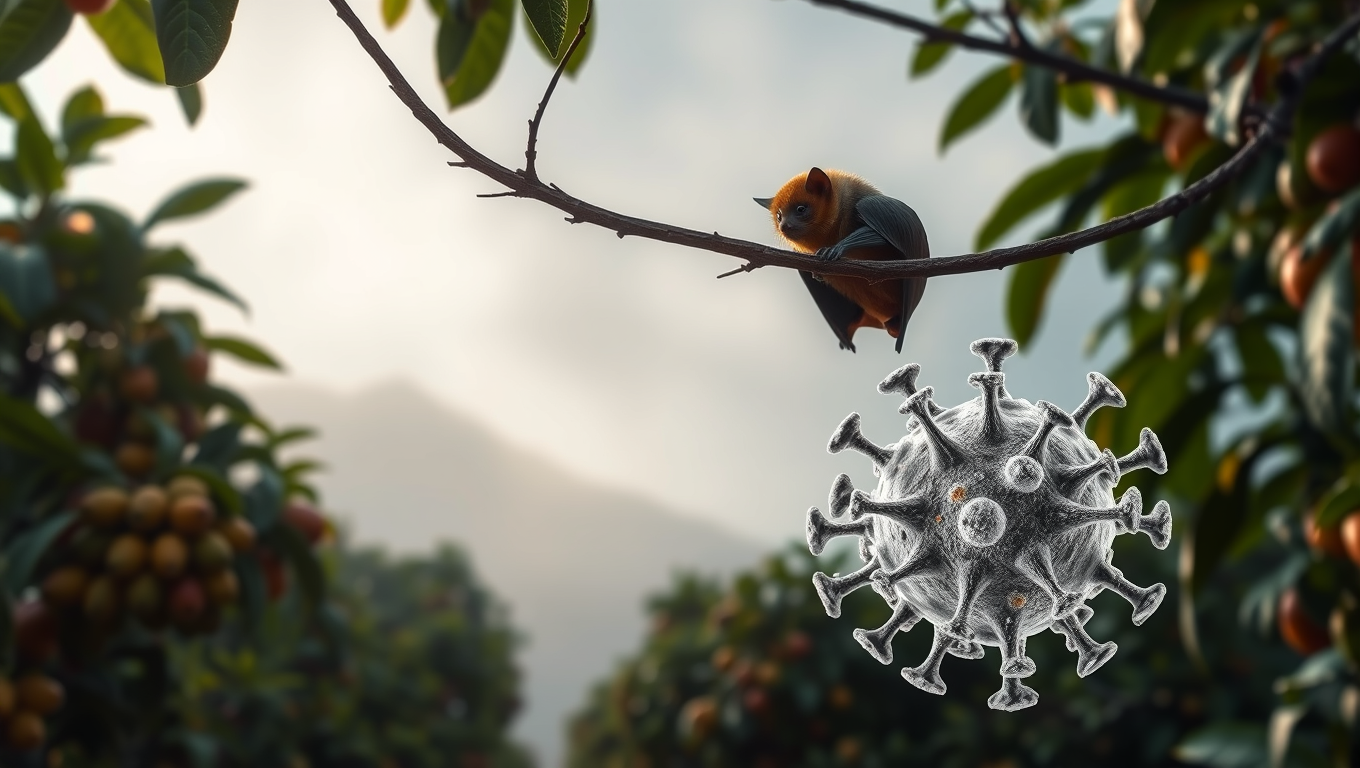While we try to keep things accurate, this content is part of an ongoing experiment and may not always be reliable.
Please double-check important details — we’re not responsible for how the information is used.
Fungus
The New Season of The Last of Us: A Spore-ting Step Towards Realism
The Last of Us is back on April 13 and this season is more realistic than ever. The trailer for the hit HBO series appears to show the ‘zombie fungus’ cordyceps infecting humans by releasing air-borne spores, instead of through tentacles — closer to scientific reality. And it’s not the only thing the show gets right.

Animals
“New Bat-Borne Viruses Discovered in China Pose Potential Pandemic Threat”
Two newly discovered viruses lurking in bats are dangerously similar to Nipah and Hendra, both of which have caused deadly outbreaks in humans. Found in fruit bats near villages, these viruses may spread through urine-contaminated fruit, raising serious concerns. And that’s just the start—scientists found 20 other unknown viruses hiding in bat kidneys.
Fungus
Mojave Lichen’s Secret to Withstanding Death Rays: Unlocking the Potential for Life on Distant Exoplanets
Lichen from the Mojave Desert has stunned scientists by surviving months of lethal UVC radiation, suggesting life could exist on distant planets orbiting volatile stars. The secret? A microscopic “sunscreen” layer that protects their vital cells—even though Earth’s atmosphere already filters out such rays.
Dinosaurs
Uncovering a Microscopic Spear: Fossil Record Reveals 160 Million-Year-Old Fungus Piercing Trees
In a paper published in National Science Review, a Chinese team of scientists highlights the discovery of well-preserved blue-stain fungal hyphae within a Jurassic fossil wood from northeastern China, which pushes back the earliest known fossil record of this fungal group by approximately 80 million years. The new finding provides crucial fossil evidence for studying the origin and early evolution of blue-stain fungi and offers fresh insights into understanding the ecological relationships between the blue-stain fungi, plants, and insects during the Jurassic period.
-

 Detectors3 months ago
Detectors3 months agoA New Horizon for Vision: How Gold Nanoparticles May Restore People’s Sight
-

 Earth & Climate4 months ago
Earth & Climate4 months agoRetiring Abroad Can Be Lonely Business
-

 Cancer4 months ago
Cancer4 months agoRevolutionizing Quantum Communication: Direct Connections Between Multiple Processors
-

 Agriculture and Food4 months ago
Agriculture and Food4 months ago“A Sustainable Solution: Researchers Create Hybrid Cheese with 25% Pea Protein”
-

 Diseases and Conditions4 months ago
Diseases and Conditions4 months agoReducing Falls Among Elderly Women with Polypharmacy through Exercise Intervention
-

 Chemistry3 months ago
Chemistry3 months ago“Unveiling Hidden Patterns: A New Twist on Interference Phenomena”
-

 Albert Einstein4 months ago
Albert Einstein4 months agoHarnessing Water Waves: A Breakthrough in Controlling Floating Objects
-

 Earth & Climate3 months ago
Earth & Climate3 months agoHousehold Electricity Three Times More Expensive Than Upcoming ‘Eco-Friendly’ Aviation E-Fuels, Study Reveals





























